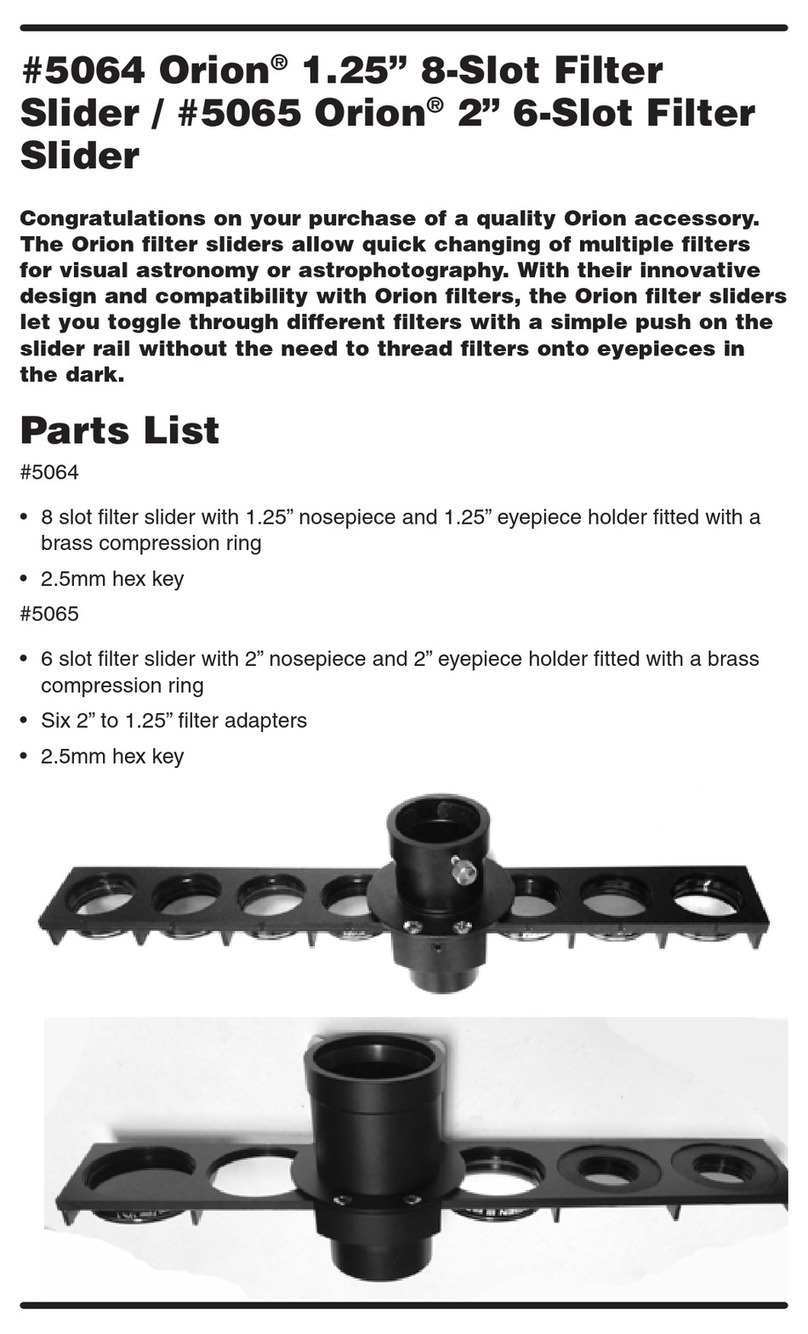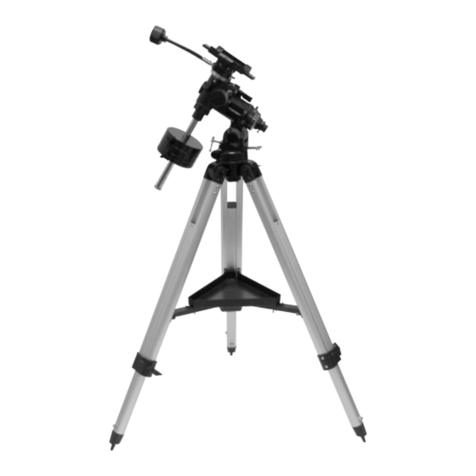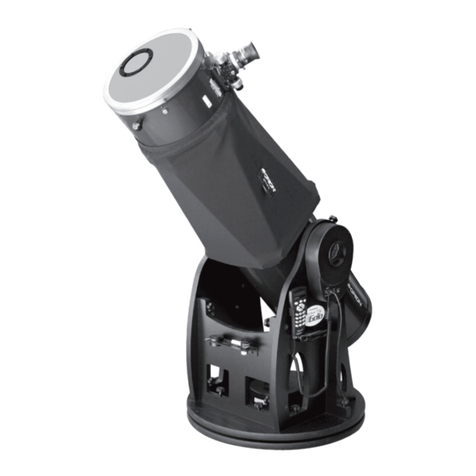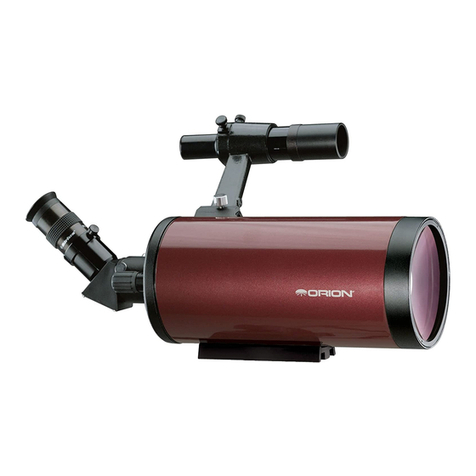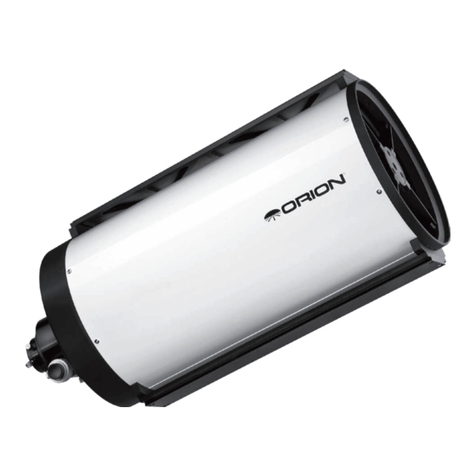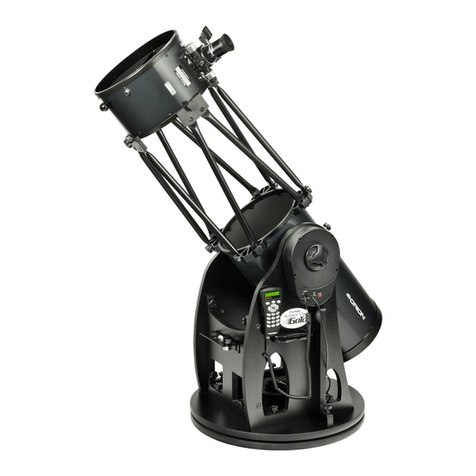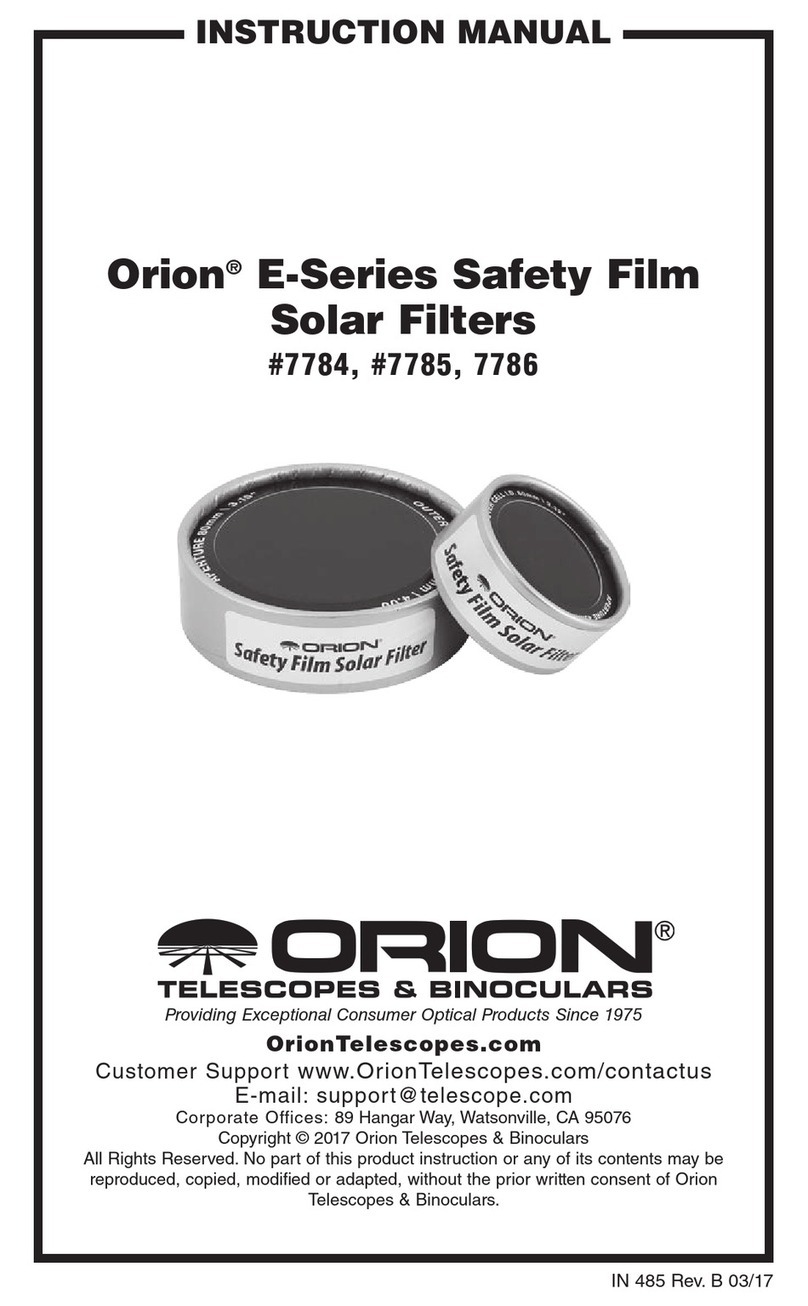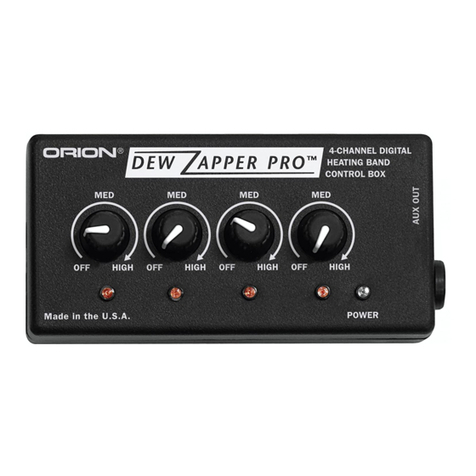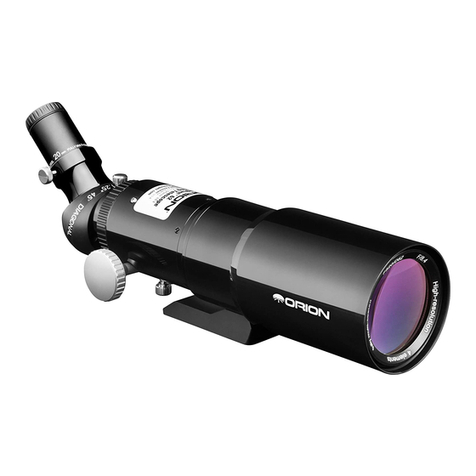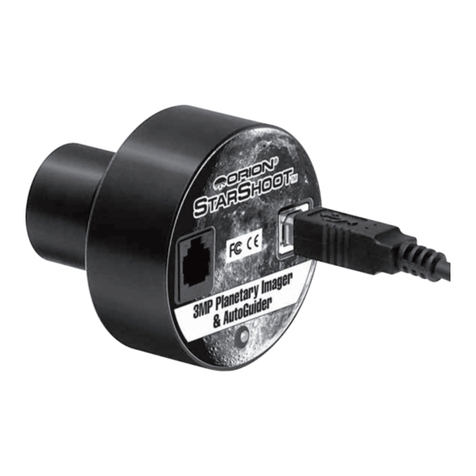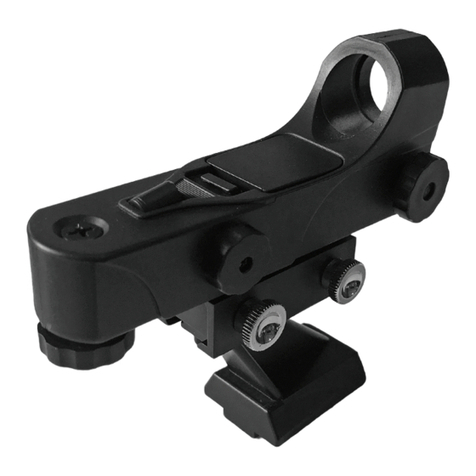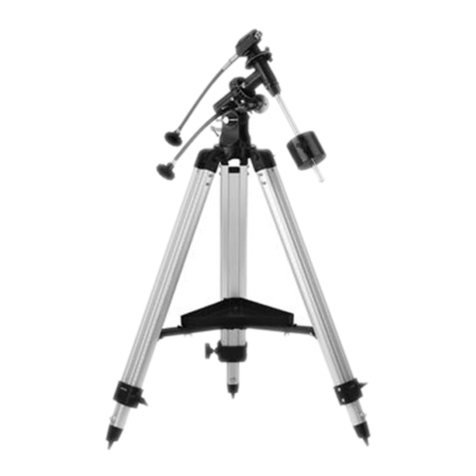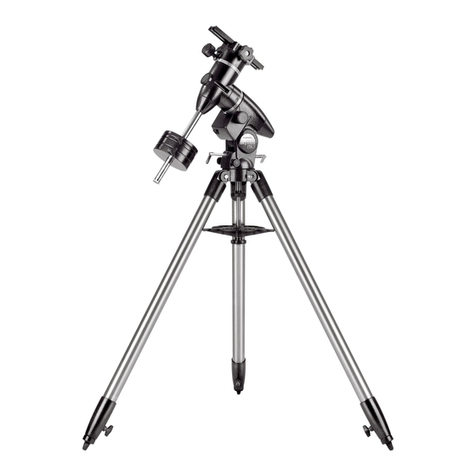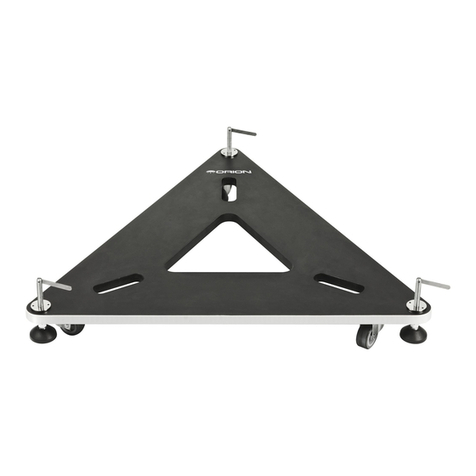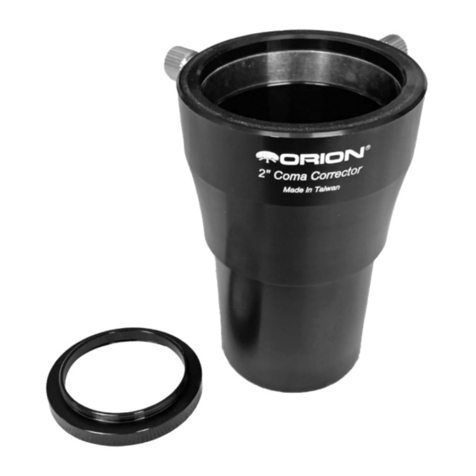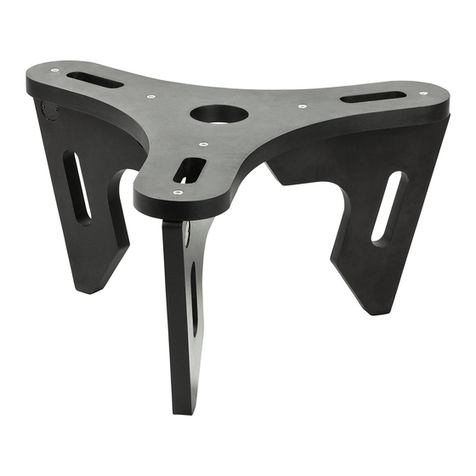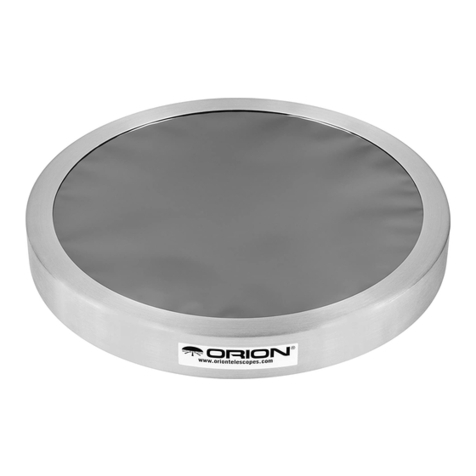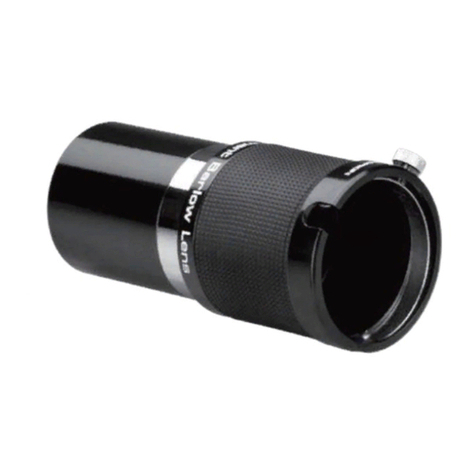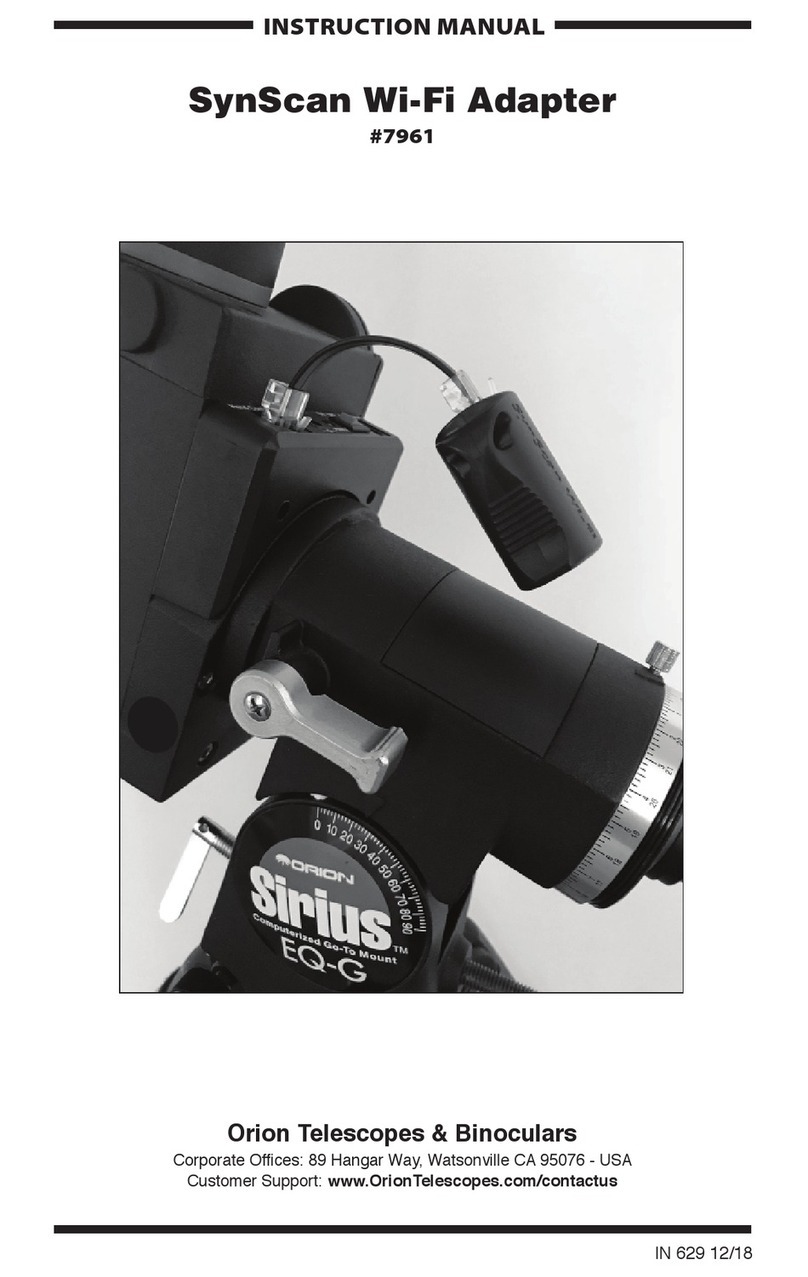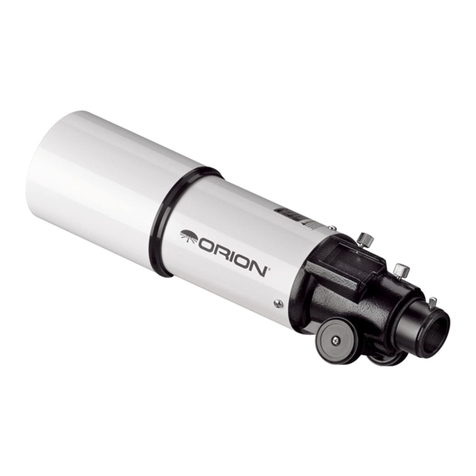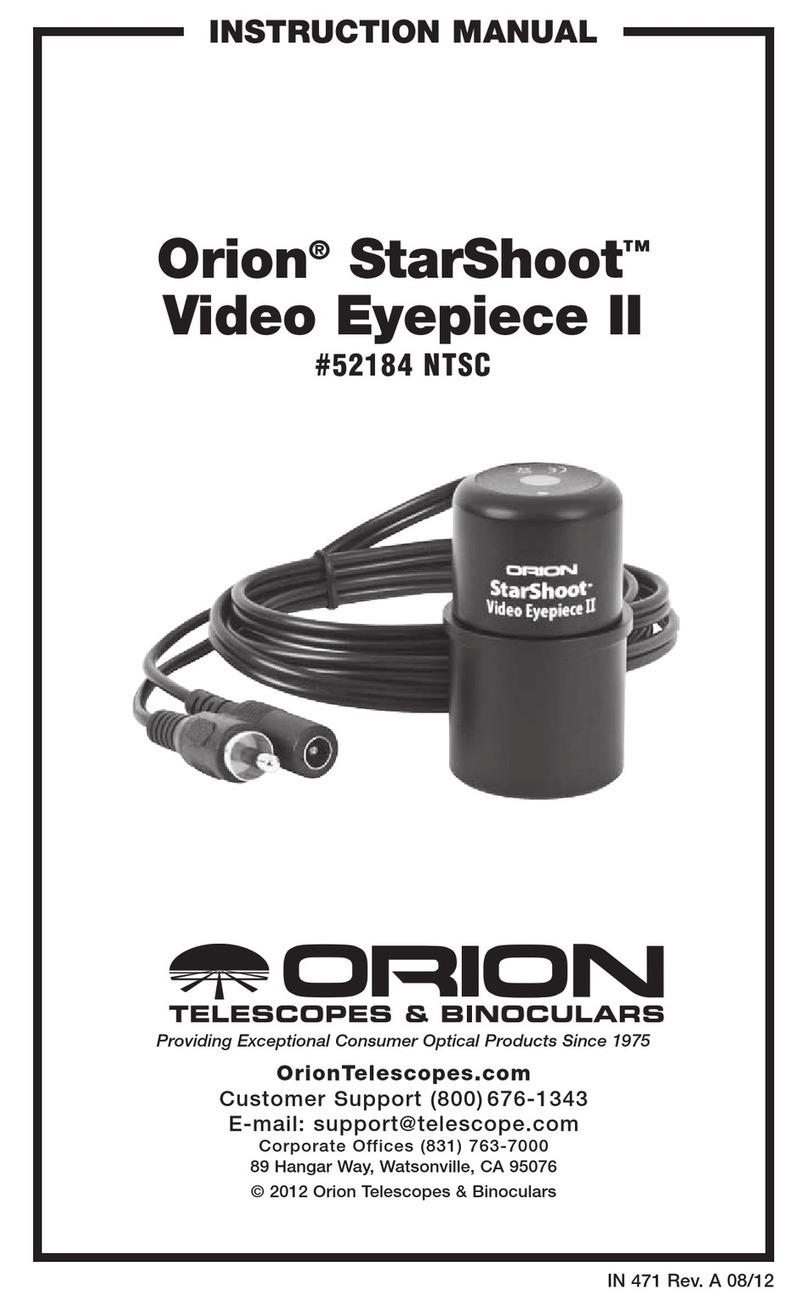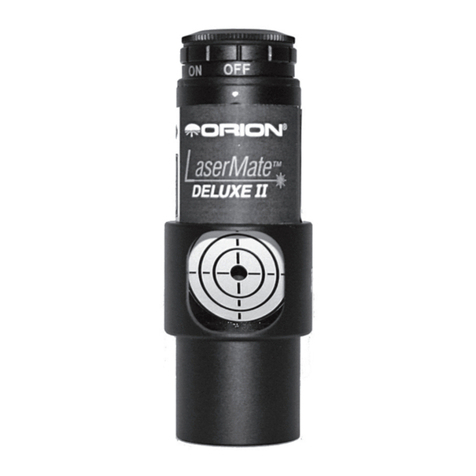
5
new telescope outside under a starry sky. Be sure to allow the
telescope to equilibrate to the outdoor temperature for at least
30 minutes before using it; this ensures the best, most stable
image quality.
Connecting the EON ED90T CF to a Telescope
Mount
The EON ED90T CF refractor comes with a pair of sturdy, hinged
tube rings on the bottom of which a Vixen-style dovetail mounting
bar is attached. On top of the rings a convenient carrying handle
is pre-installed. The handle can be removed should you desire
to instead install an optional dovetail plate on the tube rings for
attachment of a second telescope or a guide scope, for instance.
You will need a 5mm Allen wrench (not included) to remove the
socket head cap screws attaching the handle to the rings.
On the top and bottom surfaces of the rings are multiple M6-1.0
tapped holes for attachment of dovetail plates.The handle, which
is Arca-Swiss compatible, has three holes on top: the middle is
¼"-20 and it is anked by two M6-1.0 holes.
Balancing the telescope can be done by moving the telescope
within the tube rings to the extent possible, or by sliding the
dovetail mounting plate forward or back in your mount’s saddle.
Observing with the EON ED90T CF
To observe with the EON ED90T CF you will need either a 1.25"
or 2" diagonal and an eyepiece, each sold separately. Because
the optics are made with high-quality ED glass, the eyepieces
you choose should also have excellent, fully multi-coated optics
to utilize the full performance of the telescope. It is desirable to
have a range of eyepieces of different focal lengths, to allow view-
ing over a range of magnications.
To calculate the magnication, or power, of a telescope, simply
divide the focal length of the telescope by the focal length of the
eyepiece.The focal length of the ED90T CF is 540mm.
So an optional 20mm eyepiece would yield a magnication of
540/20 = 27x.
If outside viewing conditions are ideal, a telescope with good
optics can achieve a magnication of about 60x per inch, or 2.4x
per millimeter, of aperture. Keep in mind that at higher powers,
an image will always be dimmer and less sharp (this is a funda-
mental law of optics). In most cases the steadiness of the air (the
“seeing”) will limit how much magnication the scope can toler-
ate, rather than the telescope itself.
Always start viewing with your lowest-power (longest focal
length) eyepiece in the telescope. After you have located and
observed the object with it, you can try switching to a higher-
power eyepiece to ferret out more detail, if atmospheric condi-
tions permit. If the image you see is not crisp and steady, reduce
the magnication by switching to a longer focal length eyepiece.
As a general rule, a small but well-resolved image will show more
detail and provide a more enjoyable view than a dim and fuzzy,
over-magnied image.
Imaging with the EON ED90T CF
Given its high-quality apochromatic optics and fast f/6.0 focal
ratio, the EON ED90T CF excels for astrophotography with
a dedicated astronomical CCD/CMOS camera or a DSLR or
mirrorless camera.As mentioned previously
For optically fast refractors such as the EON ED90T CF, an
optional eld attener is a desirable accessory to compensate
for inherent eld curvature. The attener will ensure tight, sharp
stars out to the edge of your imaging sensor, and is highly recom-
mended if you are using a camera with an APS-C size sensor or
larger. The Orion Field Flattener for Short Refractors (#8893) is
a perfect match for this instrument.
Alternatively, our 0.8x Focal Reducer (#8894), which also at-
tens the image, can be used if you desire a wider imaging area.
This focal reducer shortens the effective focal length of the EON
ED90T CF from 540mm to 432mm, which changes the focal ratio
from 6.0 to an even faster 4.8.
The Field Flattener and Focal Reducer adapters both have a
backfocus distance of 55mm, measured from the rear surface
of the adapter. Backfocus distance is the distance to reach
the image plane, or focus point. You need to insure that your
camera’s sensor sits 55mm back from the rear surface of the
adapter. For DSLRs and mirrorless cameras used with a stan-
dard 42mm or 48mm T-ring, the sensor distance will typically
be 55mm. For astronomical cameras, the sensor usually sits
closer to the front of the camera, so some additional spacing
will be necessary between the eld attener or focal reducer and
the camera to achieve the necessary 55mm backfocus. Orion
offers 42mm T-ring extension rings (#5528) and 48mm extension
rings (#52715) to help achieve focus with any number of different
cameras.You’ll want to get within about +/-2mm of the specied
backfocus requirement to ensure a sharp image.
The 2.5" dual-speed rack-and-pinion focuser of the EON ED90T
CF is capable of handling the weight of your CCD or DSLR
camera and accessories, up to 19 lbs. The drawtube tension is
set at the factory and should not need adjusting. After installing
your camera equipment onto the focuser, check the focuser for
any slippage. If it slips under the weight of the camera, you may
need to add more tension to the focuser. Do this by lightly tight-
ening the focuser tension thumbscrew (Figure 4).
Note About Chromatic Aberration
Chromatic aberration literally means color distortion. Whenever
light passes through one material to another,
different wavelengths (color) are bent by different amounts.This
is a problem that plagues refractor-type telescopes, since light
passes through both air and glass to form an image. Most astro-
nomical objects emit a spectrum comprised of many different
wavelengths of light, so each wavelength will be bent by a slightly
different amount when passing through a lens. This results in
each color of light reaching precise focus at a slightly different
point, which will provide a soft image with a halo of unfocused
color.
The EON ED90T CF is designed to minimize chromatic aber-
ration. The objective lens assembly comprises three individ-
ual lenses, one of which is made from high-performance Hoya
FCD100 ED glass. The use of this ED glass minimizes the
Magnication = Telescope Focal Length (mm)
Eyepiece Focal Length (mm)
